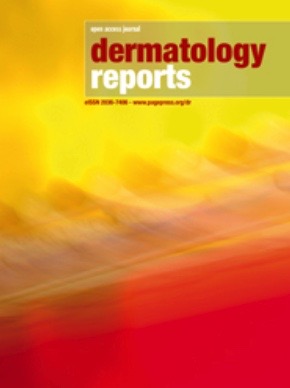Urbach-Wiethe syndrome: report of two clinical cases
All claims expressed in this article are solely those of the authors and do not necessarily represent those of their affiliated organizations, or those of the publisher, the editors and the reviewers. Any product that may be evaluated in this article or claim that may be made by its manufacturer is not guaranteed or endorsed by the publisher.
Authors
Urbach-Wiethe syndrome, also known as lipoid proteinosis (LP), is a rare genodermatosis clinically characterized by mucocutaneous lesions, dysphonia with onset in early childhood, and, sometimes, neurological complications. Clinical signs, as well as the severity of the disease, are highly variable, while its course is usually slowly progressive. The typical primary sign is hoarse crying, due to laryngeal infiltration, at birth or during early childhood. Alterations of the skin and mucous membranes develop within the first two years of life. The skin lesions initially appear on the face and limbs and usually resolve by healing. Infiltration of the respiratory system can cause upper respiratory tract infections, hoarseness or aphonia, dysphagia, and even airway obstruction. Dystonia, epileptic seizures, and learning disorders may be observed in affected children. Treatment remains a major challenge since no standardized therapies exist, but oral acitretin appears to be effective in improving skin manifestations. We report two clinical cases of young women suffering from LP, presenting with dermatological, otorhinolaryngological, and neurological symptoms, currently referred to our Rare Cutaneous Syndrome Center at the Policlinico Umberto I in Rome (Italy).
How to Cite

This work is licensed under a Creative Commons Attribution-NonCommercial 4.0 International License.








